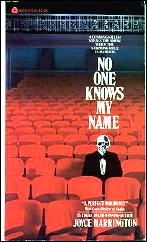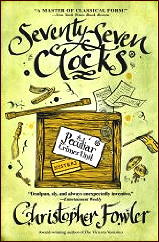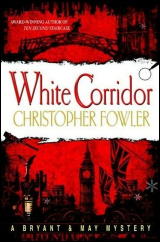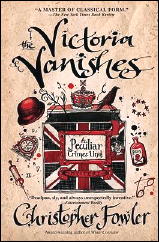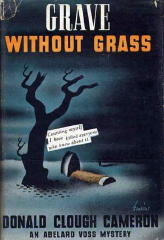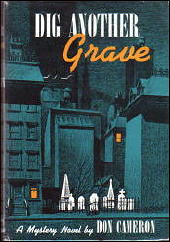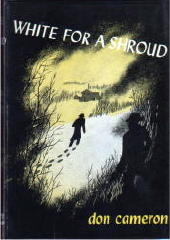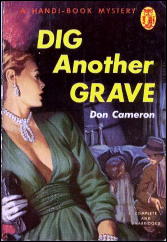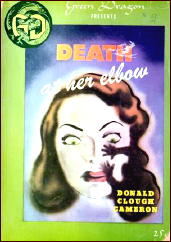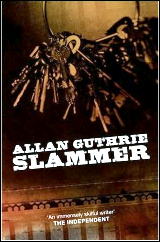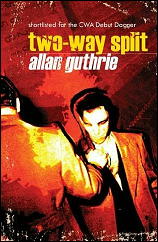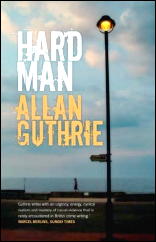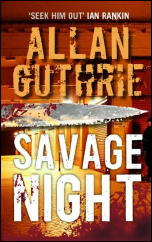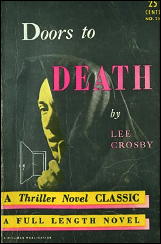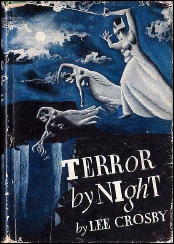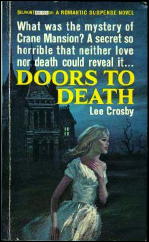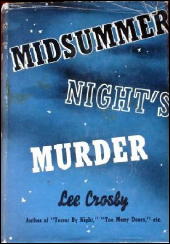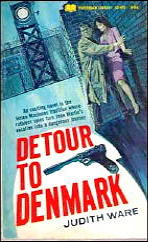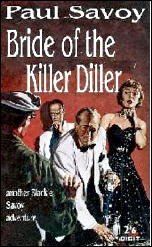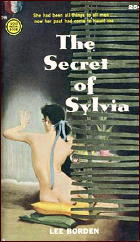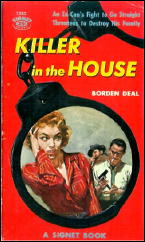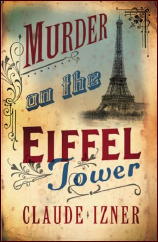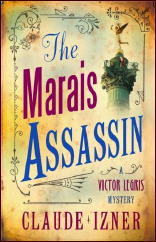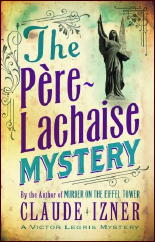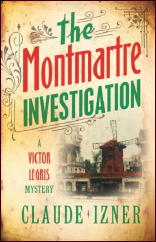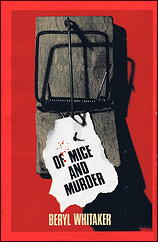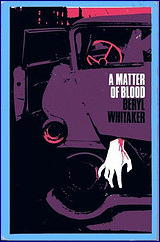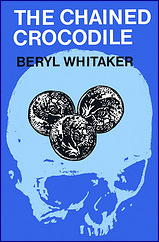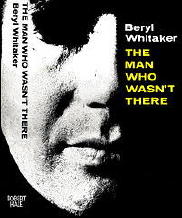Reviewed by DAVID L. VINEYARD:
CARROLL JOHN DALY – Murder From the East. Frederick A. Stokes, hardcover, 1935. Previously serialized (as individual stories) in Black Mask, May-June, August 1934. Paperback reprint: International Polygonics, 1978.
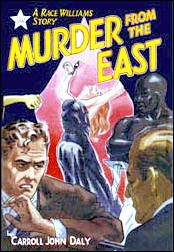
Some books have everything — or nearly everything. Murder From the East is one of those. It has a bit of everything — the yellow peril, beautiful adventuresses, and tough guy private eyes.
And as the latter goes, there was never anyone tougher than Race Williams. And if you don’t believe it, just ask him.
“I just wanted to be sure that both your hands were occupied and that you were Race Williams. So — take that.”
His right hand, that was under his jacket, flashed into view. For the moment the hard square surface of a black automatic showed; jerked up so that I looked down the blue barrel of a German Luger.
Hard, red knuckles tightened and showed white. And — I shot him five times. Five times smack in the stomach, before he could ever squeeze the trigger.
Surprised? He was amazed.
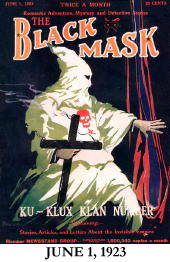
So are we. But we shouldn’t be. Race Williams is the first private eye. True, Daly’s own Three Gun Terry Mack beat Race to the game, but Terry wasn’t a private eye, or a least never identified himself as one. He was an adventurer like Gordon Young’s tough gambler Don Everhard.
Race is the first of his breed (not the first private detective, but the first in the hard-boiled mode) making his debut in the Ku Klux Klan issue of The Black Mask in “Knights of the Open Palm.” Some of the stories were pro Klan — Daly’s was anti.
In Murder From the East Gregory Ford, who runs the biggest private detective agency in the city, is working for the government, and wants to hire Race to knock off a gunman who is gunning for Race anyway. But Race isn’t having any.
“Same old Race,” he nodded. “Still trying to pose as a detective and not as a gunman.”
But before the day is over the gunman has run down Race and met his just end. Then the man who hired the gunman shows up in Race’s office.
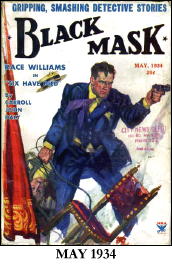
Tall, thin, slightly bent at the shoulders and dressed to play the Avenue …His face! Well, it was pointed, with a sharp but certainly not protruding chin. I don’t know if it was the color of his skin or the peculiar narrowness of those yellowish brown eyes that gave the impression he was Oriental.
His name is Count Jehdo, and he turns out to be from Astran, a country that is making trouble in Europe and Asia. He’s also involved in the “Torture Murders” the papers are screaming about.
Pretty soon Race is in the pay of the General, the man behind Gregory Ford, and the trail leads Mark Yarrow, the man behind the torture murders and Astran’s crimes but even he doesn’t know about the Number 7 man, the General’s man inside the organization, and Race’s job is to destroy Yarrow while the Number 7 man brings down Jehdo.
Then, who should show up but —
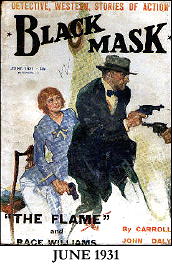
“Florence!” I said. “Florence Drummond — the Flame!”
The Flame and Race have been at this game for a while. She’s up to her neck in this new game and wants Race out of her way.
“This racket,” she nodded and her lips were very thin; very set. “A billion dollar racket!” She came to her feet, walked across the room, pushed aside the curtains by the window, and stood there a moment. There was sarcasm in her words. “I was always one for romance, Race. Let us say a man took my hand, bent forward, kissed it and promised that the day would come when I would sit in the palaces of those who ruled the world.”
But she has taken on more than a lover. She is now the Countess Jedho.
The rest of the book precedes in a hail of gun smoke as Race thins the numbers of the organization and generally makes a nuisance of himself. He’s captured and tortured, but escapes thanks to the Flame and eventually smashes Yarrow and Jehdo and reveals the Number 7 man.
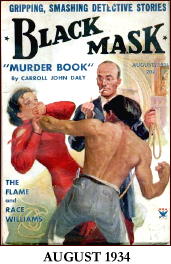
“You made use of what you always make use of. It’s not your head; it’s the animal in you. The courage in you; the thing that drives you on. You’re licked — licked a dozen times, over and over. Everybody knows it but you! No, it’s not your head.”
Much has been written about Daly’s shortcomings as a writer, and most of it is true, but what is also true is that he wrote at a sort of white hot level straight from the hip, like the hot lead pouring from is blazing .45’s, and for all the melodrama, cliches and corn, there is a conviction to his best work that few writers ever managed.
In terms of style and literary considerations he is a pale shadow of Hammett and Chandler, and he could never plot or even created characters as well as Erle Stanley Gardner, but he was the most popular writer at the famed Black Mask, and his name on the cover drove sales up every month.
Time passed Daly and Race by. For a time his tales of Satan Hall, a Dirty Harry style cop, surpassed Race, and Race eventually fell from the Mask to lesser pulps as Daly’s career sagged. By his death in the 1950’s his books couldn’t find an American publisher.
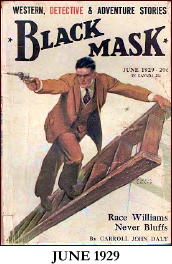
For a time Race Williams and Carroll John Daly were kings of the hard-boiled private eyes. If they lacked the graces of the better writers they still offered their own brand of thrills and action, and in their wake marched the Dan Turner’s, Mike Hammer’s, and Shell Scott’s that followed. If nothing else Daly influenced Mickey Spillane, and in Spillane had a lasting impact on the genre.
Race and his creator are fairly insubstantial figures now, but once they were giants, and traces of their footprints still leave a trail. Park a few of your critical judgments and you can still find a good deal of enjoyment in Race’s adventures.
You may not applaud the writing, but you are likely to stay for the sheer entertainment. Perhaps more than many of the better writers from Black Mask, the true voice of the pulps thunders in the exploits of the one of a kind Race Williams.
